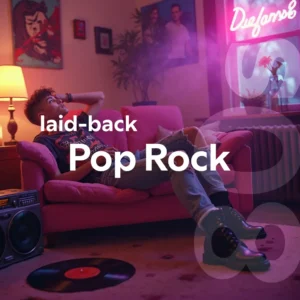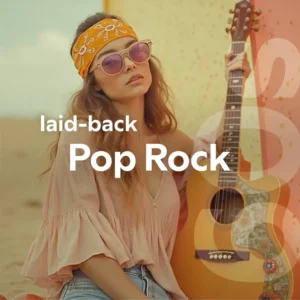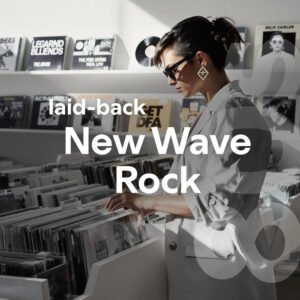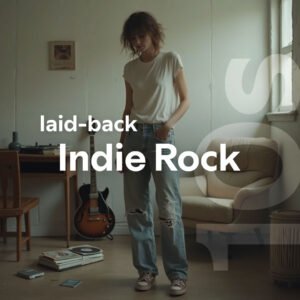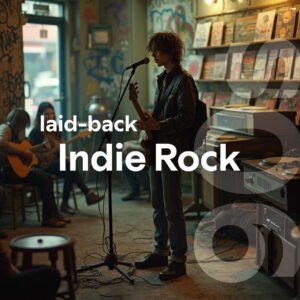all / other mood / other music genre / other rock music
Alternative Rock (also known as Alternative music, Alt-rock or simply Alternative) is a genre of Rock music that emerged from the independent music underground of the 1980s and became widely popular by the 1990s. The “Alternative” definition refers to the genre’s distinction from mainstream or commercial Rock or Pop and expressed primarily in a distorted guitar sound, subversive and/or transgressive lyrics and generally a nonchalant, defiant attitude. Common characteristics typically include a blend of often melodic, traditional songwriting with more eccentric sounds drawing from that of punk’s, moodier or quirkier lyricism, and sometimes ample amounts of guitar-based distortion and fuzz.
The term’s original meaning was broader, referring to musicians influenced by the musical style or independent, DIY ethos of late-1970s Punk Rock. Subsequently essentially serves as an umbrella term for underground music that has emerged in the wake of Punk Rock since the mid-1980s.
In the 1980s, Alternative bands generally played in small clubs, recorded for indie labels, and spread their popularity through word of mouth. In September 1988, Billboard introduced “Alternative” into their charting system to reflect the rise of the format across radio stations in the United States by stations like KROQ-FM in Los Angeles and WDRE-FM in New York, which were playing music from more underground, independent, and non-commercial rock artists. As such, there is no set musical style for Alternative Rock as a whole, although in 1989 The New York Times asserted that the genre is “guitar music first of all, with guitars that blast out power chords, pick out chiming riffs, buzz with fuzztone and squeal in feedback.” More often than in other Rock styles since the mainstreaming of Rock music, Alternative Rock lyrics tend to address topics of social concern, such as drug use, depression, suicide, and environmentalism. This approach to lyrics developed as a reflection of the social and economic strains in the United States and United Kingdom of the 1980s and early 1990s.
Throughout the 1980s, magazines and zines, college radio airplay, and word of mouth had increased the prominence and highlighted the diversity of Alternative Rock’s distinct styles (and music scenes), such as Noise Pop, Indie Rock, Grunge, and Shoegaze. The term “College Rock” was coined to describe many of these early Alt Rock acts as well as their popularity on college radios, indicating that it was something outside the mainstream.
Initially, most alternative bands at the time, like the Smiths, one of the key British alternative rock bands during the 1980s, remained signed to independent labels and received relatively little attention from mainstream radio, television, or newspapers. With the breakthrough of Nirvana and the popularity of the Grunge and Britpop movements in the 1990s, Alternative Rock entered the musical mainstream, and many alternative bands became successful. However, by the start of the 1990s, several previously independent artists, including Sonic Youth and R.E.M. signed to major labels, and the success of Grunge bands such as Nirvana and Pearl Jam launched Alternative Rock along with Alternative Metal into massive popularity. Multiple other offshoots began to pop up, particularly the jaunty Britpop of Oasis and Blur, and other prevalent genres of the 90s such as Electronic, Funk Rock, Third Wave Ska, Emo, and Hip Hop were influential on the growing Alt Rock explosion. Alternative Rock acts achieved mainstream success in the 1990s with the likes of the Grunge, Shoegaze, and Britpop subgenres in the United States and United Kingdom, respectively. During this period, many record labels were looking for “Alternatives”, as many corporate Rock, Hard Rock, and Glam Metal acts from the 1980s were beginning to grow stale throughout the music industry. The emergence of Generation X as a cultural force in the 1990s also contributed greatly to the rise of Alternative Rock.
Throughout much of its history, Alternative Rock has been largely defined by its rejection of the commercialism of mainstream culture, although this could be contested since some of the major alternative artists have eventually achieved mainstream success or co-opted with the major labels from the 1990s onward (especially into the 2000s, and beyond).
By the turn of the century, Pop Rock artists like Weezer and Alanis Morissette, Pop Punk artists like Green Day and Blink-182, and Industrial Rock artists like Nine Inch Nails would find crossover appeal with Alt Rock listeners, while Indie Rock experienced a commercial breakthrough by way of the Post-Punk Revival and Garage Rock Revival. A number of different artists during this period including Radiohead, TV on the Radio, and Ween mixed the creativity and experimentation of Art Rock with elements of Alt Rock.
Bands such as the White Stripes and the Strokes found commercial success in the early 2000s, influencing an influx of new alternative rock bands that drew inspiration from Garage Rock, Post-punk and New Wave, establishing a revival of the genres. Emo found mainstream success in the 2000s with multi-platinum acts such as Fall Out Boy, My Chemical Romance, Paramore and Panic! at the Disco.
In the 2010s, Alternative Rock largely faded from the mainstream and returned to the underground, though Indie Rock musicians such as Car Seat Headrest, Mitski, and Courtney Barnett enjoyed some moderate success. The genre also influenced Emo Rap along with the more wistful strains of Pop Rap, with Kid Cudi and Lil Peep integrating various aspects of Alt Rock into their music.
sources: discogs, wikipedia, rateyourmusic



